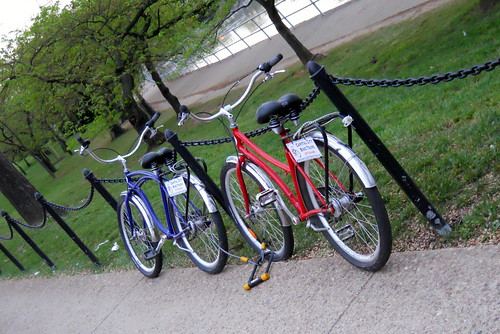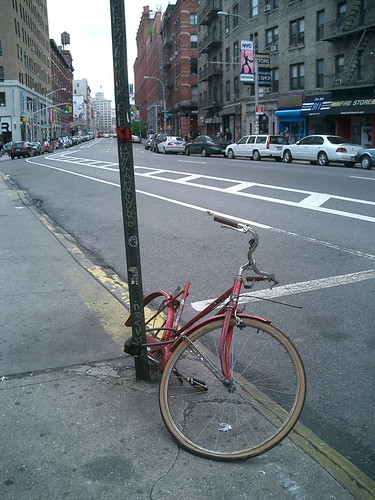 Bike Tribes: A Field Guide to North American Cyclists by Mike Magnuson
Bike Tribes: A Field Guide to North American Cyclists by Mike MagnusonMy rating: 3 of 5 stars
Magnuson is a writer for Bicycling Magazine, a (fairly serious, I guess) recreational cyclist, and has written several books, including his autobiographical "getting control of my life" Heft on Wheels: A Field Guide to Doing a 180 that I read a few years ago. Heft on Wheels was a mighty peculiar book that was somewhat entertaining but often in a "too much information/I should avert my eyes from this train wreck" sort of way. Some of his writing for Bicycling Magazine has too much Mike Magnuson injected into it too, so if nothing else this is a change for him in that he is writing about cycling but leaving himself almost entirely out of the narrative.
Apparently Magnuson likes the phrase "field guide" since this is his second book with that phrase in the title, but this book (unlike his last "field guide") bears some resemblance to a field guide. As he says in the beginning, "this is a book about people who ride bicycles" - and according to him, most of these people fall into "tribes" that Magnuson proceeds to describe alternating descriptions of different "tribes" as such with vignettes that include composite characters (as he describes them) that are meant to represent the different tribes.
There are 22 chapters and since their are full-page drawings as illustrations and a certain amount of white space when chapters end in mid-page and the book is only 200 pages long, it reads quickly and really, there isn't much too here. But then what are we talking about - the main types of cyclists. So should this be War and Peace? Hopefully not.
The last few books I have read about cycling has led me to wonder, "who did the author think this books was for?" Presumably nobody imagined that this book would have much appeal beyond the cycling community. For someone who knows much of what the author describes, his presentation is amusing - I would not agree with the blurb on the back cover that it is "hilarious." For newer cyclists there is probably enough context provided that one can learn a few things about those different cyclists one would be seeing out and about. For people who aren't familiar with any of this I would guess this is all a bit too obscure.
I was personally saddened not to see myself in any of the archetypes Magnuson created. His three "commuters" include a serious steel bike person with fenders who rides in his work clothes, a young guy who is becoming enamored of cycling even though it was forced on him by DUI convictions, and a young woman who is a student for whom it is a green thing to do and fun. I suppose I am closest to the first one . . .
Because Magnuson himself used cycling as the centerpiece of a weight loss program, he talks about cycling as a way to lose weight a fair bit. Apparently he would disagree with Grant Petersen, who claims in his recent book that cycling is not a weight loss system. It's an interesting question. I don't regard cycling as a weight loss system but as a way to keep extra weight off. Mostly.
I gave this three stars in large part because of the slightly failed expectations - it was only slightly amusing. Usually short books like this I zip through but this didn't grab me much I guess because I had to remind myself to finish it.
View all my reviews













